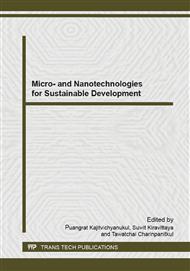p.77
p.85
p.91
p.97
p.105
p.113
p.121
p.129
p.137
Influence of Vanadium on Cement Properties and Leaching Analysis
Abstract:
Nowadays, industrial wastes are widely used as an alternative fuel or raw material in the cement industry owing to the advantage of waste removal and gaining economic incomes from preserving non-renewable energy resources. In the present work, the effect of the addition of small amounts of vanadium in the clinkering process of cement mortar was studied. Vanadium was chosen to study as it is present in the coke commonly burned as fuel and in industrial wastes such as used oil which is used as alternative secondary fuel in cement kilns. The study simulated the burning process in a chamber furnace. Raw meal was burned with vanadium oxide (V2O5) in four concentrations from 0.01 to 1% by weight. The resulting clinker was analysed for the content of free lime and X-ray diffraction (XRD) analysis was done. These samples were also analysed by scanning electron microscope (SEM) connected with an energy-dispersive X-ray-spectrometer (EDS) to detect the composition of the clinker phase. The results show that only very high intakes of vanadium oxide higher than 0.5% by weight have measurable effects on the formation and composition of the clinker. Amounts of C3S and C2S were decreased with high intakes of vanadium. To study the leaching behavior, the microwave-assisted leach method 3051A. Result showed that vanadium was likely to be leached from cement that 15-20% of them can be leached to the environment. In case, TCLP (US EPA) test the result showed that raw material doped with vanadium up to 1 wt.%, the cement was not classified as hazardous waste.
Info:
Periodical:
Pages:
113-119
Citation:
Online since:
May 2015
Authors:
Keywords:
Price:
Сopyright:
© 2015 Trans Tech Publications Ltd. All Rights Reserved
Share:
Citation:


